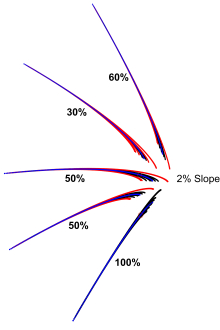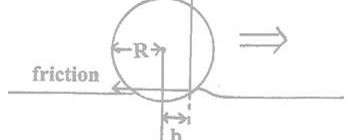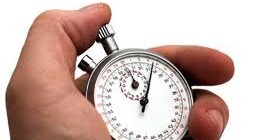I recently conducted the first of a series of planned studies with AimPoint instructor Jamie Donaldson, and Paul Hurrion and Jim Mackay of Quintic Consultancy to determine how differences in launch conditions in putting affect the outcome of the putt. The concept is simple–if I hit a putt with perfect line and start speed, but with varying amounts of skid, will it cause me to miss?
The Quintic Ball Roll system uses high speed cameras to measure a variety of factors including speed, roll and skid during the first 16 inches of a putt, yielding fascinating information about how different launch conditions effect the putt. Our goal was to better understand a player’s ability to control speed and distance, whether through normal variances or by changing launch conditions.
The data set we used was a series of 10 foot putts hit by a multiple winner on the European Tour who is ranked in the top 100 in World Rankings. He is know to have extremely good speed control and his variance is thought to be about as good as a human could control. What we found was that his initial launch speed only varied by 5%, but the ball speed 16 inches into the roll varied by 11%, due to differences in launch angle and skid. This equated to a difference of 0.4 mph of velocity between the fastest and the slowest putt.
The next obvious question is how much does 0.4 mph of speed change the outcome of the putt. We then used the AimPoint software to simulate 10 putts across different angles and slopes so we could see how many went in and how many missed (stimp 11). Given a perfect line and 0.4 mph variance in speed, how many putts would the player make? The images below show the results of what percentage of putts would still go in, based on gradient and angle (the red lines are misses):
Putts Across a 1% Slope

Putts Across a 2% Slope

Putts Across a 3% Slope
The results clearly show that as the slope gets steeper, the speed variance causes bigger misses. Keep in mind that this player has what is considered world-class speed control with only a 0.2 mph variance around his average. It also shows that smaller uphill angles are more forgiving of speed variances than cross-hill or downhill angles, something we have certainly seen while teaching.
From a strategic perspective, it should be obvious where we want to putt from and why. And from a performance perspective we learn that having consistent launch conditions can have a big effect on distance control. But we also learn that some natural variance in speed must be expected, and when condition get fast and steep, those downhill putts are dramatically harder to make than the uphillers. Putting is a game of percentages, be sure you know where the odds lay in your favor.


























